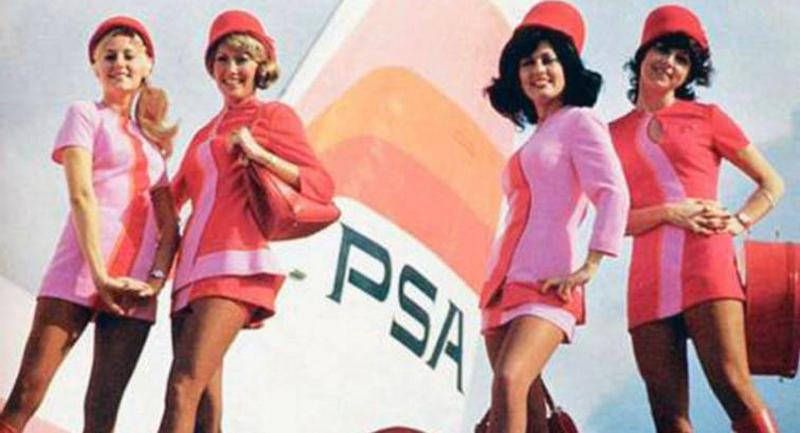Flight Attendant Uniforms & The Groovy Era's Unique Influence
By | April 17, 2022

The uniforms of flight attendants have radically changed since the job’s inception in the 1930s. (Gone is the faux pas of “stewardesses.”) As air travel became an instrumental part of life, the uniforms of “air hostesses” in turn, reflected the zeitgeist of each epoch. Unsurprisingly, the late ‘60s and ‘70s renditions set the eyebrow-raising standard.
The peak of groovy ridiculousness arrived, thanks to Braniff Airlines and their plexiglass Bubble Bonnet. From jaunty hats to outlandish prints and leg-baring shorts, a new decade witnessed an eruption of vivid regalia. Here’s a history of the cabin crews' uniforms and the hippie era’s influence.

Onboard Nurses
In the 1930s, registered nurse Ellen Church successfully lobbied Boeing Air Transport into hiring her and seven other nurses. Flying was still a relatively new concept and she rightly argued that having qualified attendants would ease the anxiety of leaving the ground in tin coffins. Sporting wool uniforms with charming caps, these eight women made history. Over the next four decades, their role wouldn’t change greatly but their garb would.

A ‘60s Sea Change
According to Cliff Muskiet, proprietor of Uniform Freak, an online museum of flight attendant uniforms, they underwent a huge change in the Swinging Sixties. "Back in the 1940s, 1950s and early 1960s all stewardess uniforms looked alike." An employee of Dutch airlines, KLM, Muskiet has amassed a massive collection of over 1,300 uniforms from around 500 different airlines. Naturally, that homogeneity couldn’t survive the free love decade and Braniff Airlines helped set the outrageous standard.

The Braniff Bar
In an effort to separate themselves from the competition, Braniff Airlines hired Italian fashion designer Emilio Pucci to redesign their uniforms. And boy, did Pucci break Braniff from the squares! His plexiglass Bubble Bonnet, aka the Space Bubble Helmet, looked like the Jetsons crossed with One Million Years B.C.
Other than making the unfortunate wearer look hilarious, the goldfish bowl also made hearing rather difficult. Thankfully, it mostly protected the flight attendants’ hair as they made their way across the tarmac in windy and rainy weather!

Sex Sells
When you hire an Italian designer to redo your uniforms, you can’t just stop there. Braniff also "turned the stewardess into a patently sexual icon,” according to Victoria Vantoch, author of "The Jet Sex—Airlines Stewardesses and the Making of an American Icon." The company’s "TV commercial depicted a stewardess performing an airborne striptease," said the author “and other airlines soon followed."
Famously, Howard Hughes took a similar route, tapping the talents of American artist and designer Mario Armond Zamparelli. The artist delivered a chic Sundance yellow princess-line knit dress, complete with matching zippered jacket, hooded cape, or coat. Soon after the Hotpants fad also made its way to the friendly skies.
Airline uniform connoisseur Muskiet noted that “The stewardess was used to attract male passengers and hot pants were part of the plan. Continental, PSA and Southwest Airlines all had uniforms featuring that style." And he, for one, didn't mind, "There’s no reason in the world why stewardesses have to look like tank commanders."
